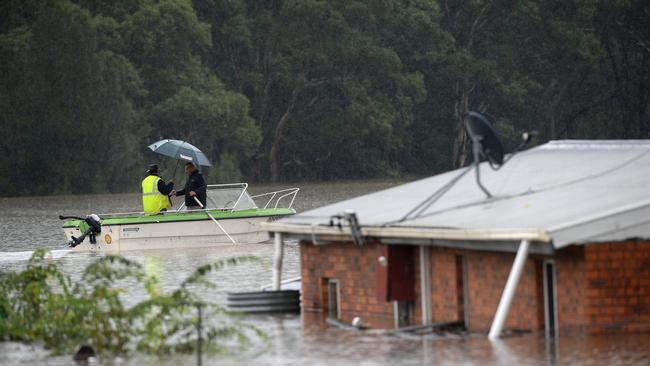Floods and bushfires: How to cope as disasters hit us one after the other

It’s heartbreaking to watch people who’ve had their livelihoods destroyed. Many are either not insured, or underinsured, through no fault of their own.
We know our changing climate is increasing the frequency and severity of extreme weather events. Expanding development in high-risk areas further grows our vulnerability.
We face an urgent challenge to build the resilience of our communities to withstand, absorb and recover from these disasters. Without doing so, we will continue to see more suffering including an increase in the social, economic and environmental toll.
To build resilience, governments must empower local leaders to involve communities in decision-making. While businesses, local organisations and communities already play a large role in disasters, they could be further encouraged to contribute to preparing the community.
Warning systems are critical in providing advance notice so people can reduce damage. Risk Frontiers research has shown during floods that well-prepared small businesses can save up to 80 per cent of losses if sufficient warning time is provided.
Of course, we must also reduce the risk. According to the UN, for every dollar spent on mitigation about $7 in economic losses are saved. It’s a win-win.
We spend about 97 per cent of disaster-related expenditure on relief and recovery, with the commonwealth spending $1.5bn from the National Bushfire Recovery Fund since the Black Summer bushfires. That leaves just 3 per cent on mitigation, which is not enough.
In 2015, the Productivity Commission recommended the federal government increase mitigation funding by $200m a year, to be matched by the states and territories. This would include construction of flood mitigation, fuel reduction and strengthening buildings to withstand severe storms.
Where insurance is unaffordable, often due to high risks, mitigation can lower premiums. In other words, mitigation can increase financial resilience, as it did in Roma in southwestern Queensland, where the construction of a diversion drain and an extension of the town levee resulted in premiums dropping by about 50 per cent.
In Northern Australia, some insurers are already implementing household mitigation programs to retrofit existing buildings and link these with incentive measures such as discounted insurance premiums.
Mitigation investments must be risk-based. In the north of the country it is about flood and cyclone risk, so the priority is on strengthening buildings. In other areas, heatwaves, our biggest killer, deserve particular attention.
Following a disaster is an opportunity to build back better. This means restoring properties to a more resilient form or relocating them altogether. After the 2011 Queensland floods, the town of Grantham was relocated from the low-lying floodplain to a nearby hill, significantly reducing future flood risks.
Importantly, we must reconsider where we build. For example, the so-called one-in-a-100-year flood has defined urban planning on floodplains globally. However, high-flood risks can be present above this level. As such, we must take a realistic approach that encourages development outside flood-prone areas. The same applies to infrastructure.
Where disasters cannot be mitigated, we must always be ready to respond and recover. Our volunteer emergency services are amazing. However, it is not feasible for emergency services to be resourced for the most catastrophic of disasters.
Responses to events that may overwhelm state and territory resources rely on national disaster management co-ordination. The commonwealth recently passed national emergency management legislation, though co-ordination arrangements remain an area for further attention, such as how different emergency services work together.
Technology, too, plays its part. Rapid detection and suppression of bushfires is vitally important. This could see swarms of UAVs supported by ground-based drones to target fire suppression.
We all have a part to play in building a resilient Australia.
Andrew Gissing is general manager of Risk Frontiers and a disaster risk management expert with 20 years’ experience.



How do we make sense of the tragedies that have racked Australians during the past 18 months? Drought, heatwaves, bushfires, storms, COVID-19 and now floods have brought tragedy and suffering to our communities.